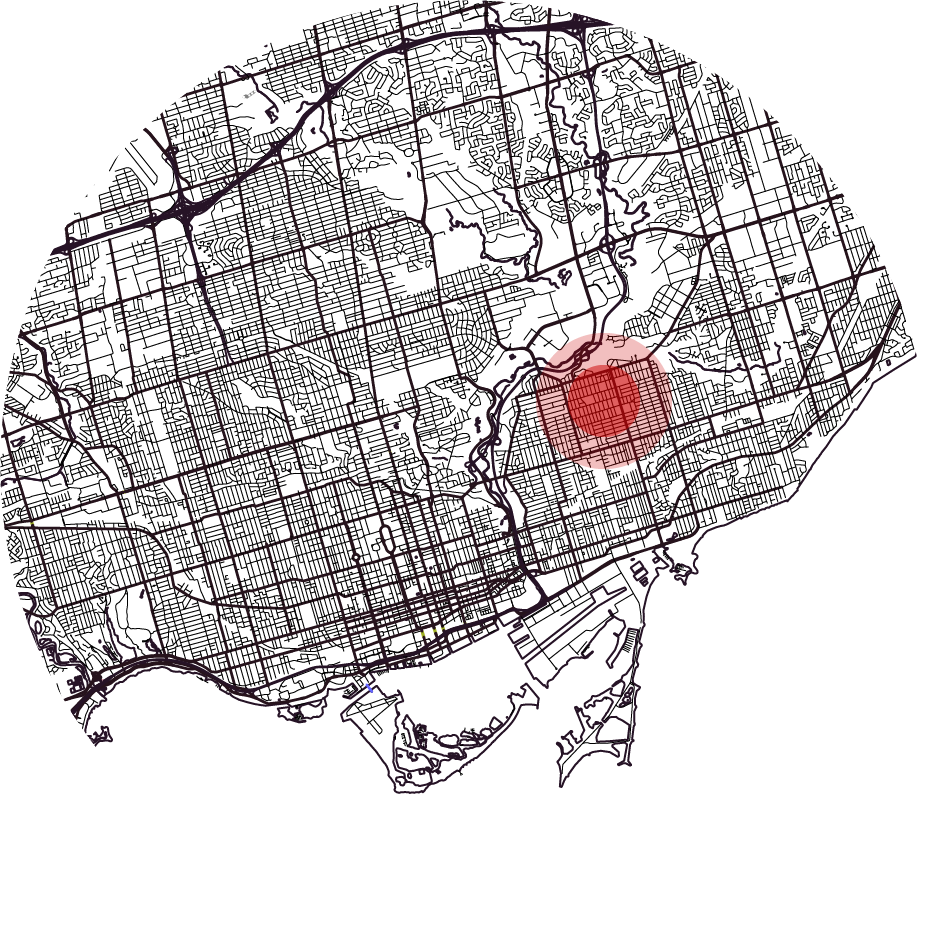
Thank you! Your submission has been received!
Oops! Something went wrong while submitting the form.

"PiinPoint has become an integral part of my role as Retail Analyst at Cushman & Wakefield Waterloo Region. The platform allows me to put together professional looking reports and provide clients with the insights they need to make real estate decisions.
I honestly don’t know how I would do my job effectively without PiinPoint."
Jessica McCabe, M.Ed.
Retail Analyst


Get up-to-date mobile location data and learn more about your customers, competition, properties and community’s movement behaviour.
Tired of municipalities with outdated or unavailable traffic studies? PiinPoint combines mobile location data with machine learning to provide accurate, consistent, and always up-to-date traffic counts for all major road segments across North America.



Access to mobile data observations can augment your current customer data to better illustrate where your customers are coming from. Discovering the origin of your visitors by DA also offers a more sophisticated sampling technique as you develop micro-market customer profiles.
Mobile Location Data is a powerful input for predictive models that forecast new store sales or cannibalization impact Predict future performance by looking at mobile data activity volumes around current and existing sites, or measure cannibalization impact by identifying shared traffic at existing locations versus new store locations.


Mobile Location Data offer a snapshot into who your customers are, their visit patterns, and how their behaviour changes over time.
Article: How Mobile Location Data Gives Retailers a Competitive Edge
Get insights on
Where does the Mobile Location Data data come from?
PiinPoint partners with a third-party vendor Near. Their base layer of data represents a sample size of up to 12% adjusted by geography, and is extrapolated by PiinPoint to represent 100% of the North American population. PiinPoint extrapolates by adjustments based on PiinPoint’s population statistics, compared to observed device home and work location counts. Near's data is sourced from over 1,000 iOS and Android apps on mobile phones, which either make use of cookies or ask the user to enable access to their location settings.
How do you protect the privacy of our customers?
We take privacy seriously at PiinPoint. We have partnered with Near, a leading provider of anonymized mobile location data. The data is collected from smartphone users who have given the app developers consent to gather location data. Data is de-identified, aggregated to a Dissemination Area (DA), ensuring that home or work locations are not shown. Geofenced areas must have a minimum of 15 people within its borders to be visualized.
How often is the data updated?
Data is delivered to PiinPoint daily, and is updated into PiinPoint on a monthly basis to account for lagging observation delivery (typically 1-5 days). Mobile location data from PiinPoint captures historical data up to 2 years old, and into the present day.
Most municipalities do not update AADT for all road segments each year. With PiinPoint’s mobile data, we are able to deliver the newest snapshot of AADT counts for any given road segment. This relieves our users from having to worry that traffic patterns haven’t changed since the latest version of AADT was created for any given area.
What is your data coverage?
PiinPoint’s Mobile Traffic data is available for all of North America. PiinPoint geofencing and Visitor Reports are available across Canada.
How does PiinPoint ensure accuracy?
PiinPoint has conducted extensive accuracy testing in order to be confident in our mobile data predictions. Using a supervised machine learning model, our accuracy measurements are currently at 81.62% for AADT predictions.
How is PiinPoint’s Mobile Data different from Annual Average Daily Traffic (AADT)?
PiinPoint’s Mobile Traffic data is not so different from AADT studies, except that it is based on a consistent set of observations (anonymized mobile devices), as opposed to a variety of collection methodologies and display options. PiinPoint’s Mobile Traffic is always displayed by road segment, as opposed to point-based locations.
How do you Calculate Visits?
Visits are calculated based on devices intersecting a geofence within a requested time frame. Any single intersection is staged as a potential visit. For each, PiinPoint assesses other factors of the device at the time frame including its GPS accuracy and velocity, in order to disqualify visits that cannot be confidently placed in the geofence.
How do you Calculate Traffic Volumes?
Traffic volumes capture all intersecting devices along a queried road segment. Similar to visits, intersecting devices are staged as a potential vehicle or pedestrian and undergo qualification tests to identify the type of traveller. Qualified devices are counted and summarized as a result of the traffic volume request.